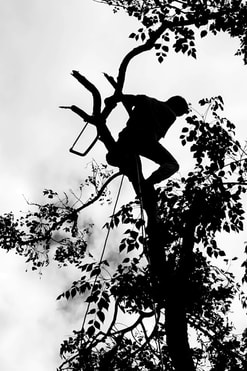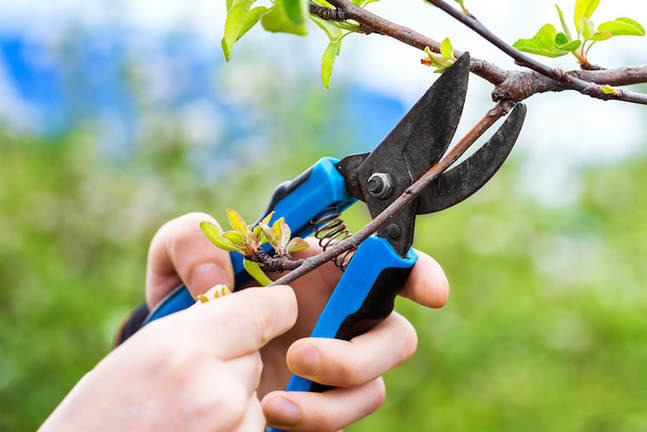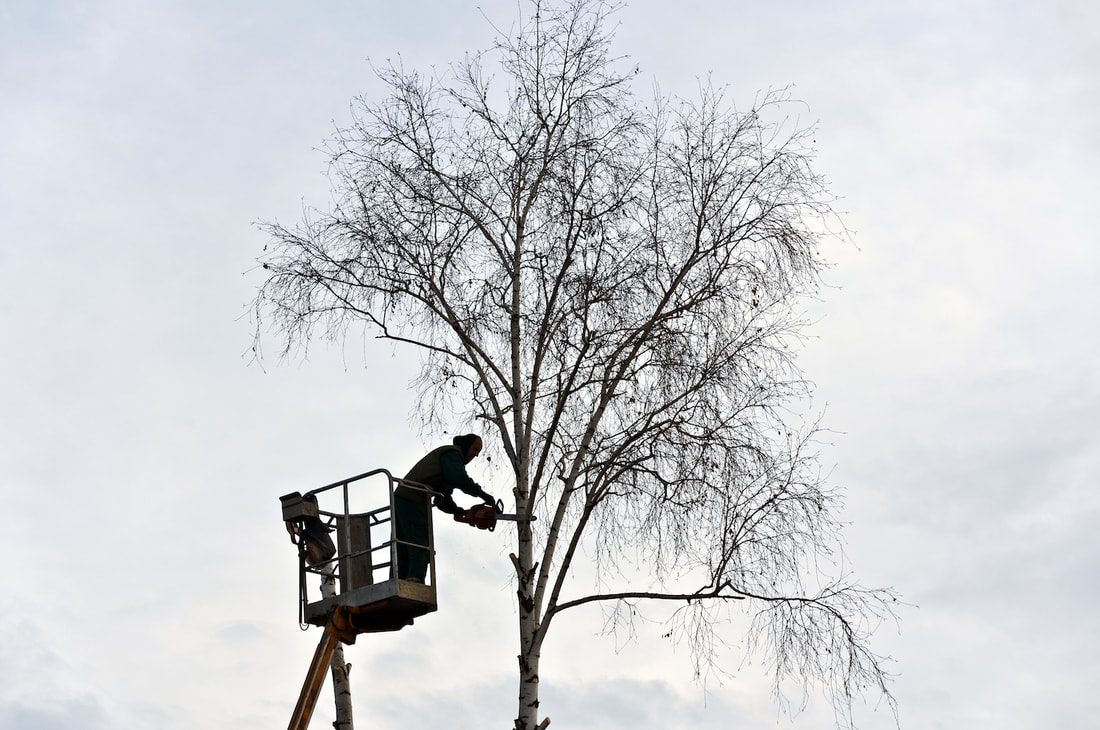
If you are removing tree limbs of a heavy tree, then it is important that you are extra careful not to damage the bark or interfere with the tree's healing process. The way to do this is to remove the tree limbs accurately and safely. Some people consider removing tree limbs from a tree to be a simple task without too many challenges; however, this is untrue. To safely remove tree limbs, it is important that you plan ahead and prepare for the project. This article will act as a guide to safely remove tree limbs from a heavy tree.
How To Remove Tree Limbs In Three Steps 1. Notch A Cut The first step to safely removing tree limbs from a tree is to cut a notch at the bottom of the limb. Ideally, the notch should be approximately two or three feet away from the tree trunk and one quarter through the tree. This small notch is useful in keeping the bark of the tree from splitting when cutting the limb away. 2. Making A Relief Cut Once a notch cut has been made, it is time to make a relief cut into the tree. Find an arbor company that help you in fort worth. This involves cutting through the branch completely and removing the weight of the branch; therefore, providing the tree with "relief". It is important to make a relief cut so that the final cut to remove the tree limb can be made without any splitting or falling. 3. The Final Cut The final cut is the cut that matters. The cut should be performed where the tree's branch collar, also known as the swollen bump, changes into a smooth bark. Following the slant of the collar, cut the limb from the tree. If, however, the saw does not fit into the bump at the correct angle, it is recommended that the limb is removed from the bottom of the branch upwards. The Different Tree Trimming Mistakes 1. Leaving The Branch Long A branch collar on the tree trunk can only perform the job of allowing the cut to heal when the entire branch has been removed. In some cases, an individual may cut the branch too long leaving a part of the limb remaining on the tree. You can hire a tree trimming Ft Worth pros to help you further with more of the experience parts of the tree. This is detrimental to the tree's natural healing as it will not allow the branch collar to heal the branch area. 2. Cutting The Branch Too Short Previously, the majority of individuals would remove limbs so that the cut would be flush with the trunk. While this seems a "neat" result, it is damaging to the tree and its natural healing. By removing the branch and the branch collar, you will be causing scar tissue on the tree. Furthermore, there is the chance of rotten holes or seeping wounds developing in the tree where the branch collar should be placed. Final Words As can be seen, safely removing limbs from a large tree can be complicated. Using the information above, you will be able to remove limbs without negatively affecting the tree's natural healing procedure. https://www.manta.com/c/mx464q5/arborist-usa. 
The Best Time To Fertilize, Prune, and Spray Your Trees
Trees are an important gift from nature that play a major part in the lives of animals. Not only do they provide food and shelter for many small creatures of the forest, humans have been making homes out of trees for thousands of years as well. Live trees provide us with shade, without which we would shrivel in the hot sunlight. They also consume the natural fertilizer of the woods and convert it, with the help of sunlight, into fresh, breathable oxygen. Here are some of the basic care tasks for your trees and the best times of the year to do them. If you need more information on spraying your trees you can find sick trees Fort Worth near you. Trees In the City Need Fertilizer Trees that grow naturally in the wooded areas get most of their nutrients from the rotting leaves, bushes, and animal excrement that naturally falls and decays on the forest floor. However, trees in the city most likely have sidewalks and driveways blocking most of the rain from even soaking into the ground. In addition to that, people rake up their leaves, and clean up their yards, so that there isn’t much natural food rotting on the surface of the ground. These trees need to be fertilized at least every two years and sometimes every year to thrive. A full spectrum fertilizer with micro nutrients is best for your trees. The best time to do it is in the late fall and your fertilizer should be spread on the ground around the tree out to the distance of the branches overhead. This is approximately how far the roots underground grow as well. After that, water the ground well until the fertilizer has dissolved and soaked into the soil. The fertilizer will continue to soak down for months and the tree will grow faster and better in the coming springtime. Many Trees Need Occasional Insect Spraying If you have trees that bear fruit, the best time to spray them is just after the flower petals fall to the ground. There are several reasons for that, one is so you don’t kill the valuable bees that are needed to germinate your fruits. Without bees you’ll have few or no fruits. Plus, the insects that lay the eggs on your freshly growing fruits will be just starting to land and their larvae just hatching out. In addition to that, any fruits that do grow in the next few months won’t have been sprayed by the insecticide either, so that is the best time. There are also dormant sprays that are made for killing other insects during the winter, and then there are oils that are to treat scale pests as well. Each will have its most optimum time of application, and it may be best to consult with an arborist in your local area to know the exact best time for spraying each pest on each species of tree. Pruning Trees Is Best Done In The Fall You should prune all dead or decaying branches as soon as you see them. The rest of the tree should be pruned every few years in the fall. That’s when their sap is lowering down into the roots and it causes less trauma to the tree. If you have trees that you want to flourish in your yard, there are lots of small things you can do to help them out. Have a tree expert come by and set you up with a regular maintenance plan of fertilizer, spraying, and pruning to get the best looking trees ever.  RSS Feed RSS Feed
6 Comments
12/12/2019 05:03:19 am
I've decided that I want my birch tree to be trimmed because I want it to look less overgrown than how it looks right now due to some unnecessary branches that are starting to reach the ground. Thanks for reminding me that I should plan ahead if I plan to do this while it's still winter. I suppose I can hire someone to help me out since it's really tall for me to reach the higher branches with a ladder.
Reply
4/29/2021 02:03:50 pm
great article!
Reply
3/7/2022 02:33:05 am
I agree, each pest will have an optimal time of application, and it may be best to consult with an arborist in your area to determine the exact best time for spraying each pest on each species of tree.
Reply
10/27/2023 08:56:50 am
A technique for pruning trees called crown reduction is typically applied to more mature, older trees. It can support the tree's health and promote new development. A tree branch is cut back to a lateral branch that is growing when the crown is reduced. This lateral branch will join the new tree's crown when the growing season starts in the spring.
Reply
11/15/2023 11:28:08 am
Here's another great blog about tree trimming, for more information about professional tree trimming cost, and stuff like what time of year is best for tree service.
Reply
1/13/2024 09:38:13 pm
Removing tree limbs is indeed a task that requires precision. The step-by-step approach outlined here is helpful for ensuring the tree's health during the process.
Reply
Leave a Reply. |
TREE TRIMMING PROSTree Trimming Pros with the top experience you need! ArchivesCategories |

